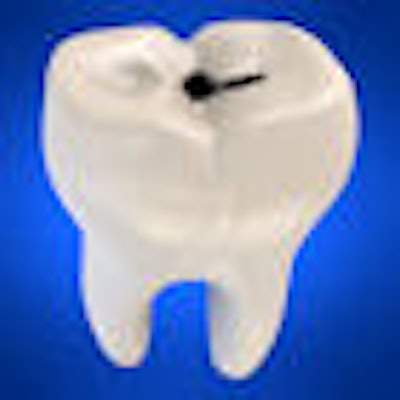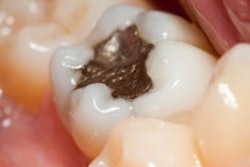
Researchers at the University of Maryland are testing a composite filling that does much more than fill the volume of space in a carious tooth; it also takes a two-fold approach to preventing caries from developing around it once it is placed.
"The first is to make the primer and the adhesive antibacterial -- we wanted the material to be bioactive," explained Huakun Xu, PhD, director of the division of biomaterials and tissue engineering in the department of endodontics, prosthodontics, and operative dentistry at the University of Maryland School of Dentistry. "The second approach is to have a filling material that contains nanoparticles that can release ions that recrystalize the tooth structure."
The primer and nanostructured adhesive contain a component of quaternary ammonium and silver nanoparticles that flow into dental tubules. In addition, the materials have a high pH, limiting the secretion of acid by bacteria. Meanwhile, calcium phosphate nanoparticles in the filling remineralize the tooth.
"The nanotechnology can release ions and increase the mineral content from 50% to 70%-80%," Xu said, adding that the new technology has significant advantages over conventional restorative materials.
"Materials on the market right now are very good at replacing the volume of the tooth," he continued. "They fill it, they are strong, and they can survive wear and tear. But they are bio-inert and don't react with the biology in the oral cavity."
— Haukun Xu, PhD, University of Maryland School of Dentistry
If the new fillings prove to be effective and reach the marketplace, they could have a dramatic impact on dentistry.
"We set out to address the issue of recurrent caries, the number one reason that restorations are replaced," Xu noted. "In the restorative dentistry field, the average dentist spends 50% to 70% of his time digging out old and failed restorations and putting in new ones."
Establishing effectiveness
So he and his colleagues sought to neutralize the causes of the failures in the tooth-filling interface: microcracks that grow over time and harbor bacteria that secrete acid, making the lesion larger and enabling more bacteria to collect.
So far Xu and his colleagues have conducted only in vitro research. "We have done a preliminary study using 25 human volunteers where they wear a removable device with the new materials," Xu said.
The results have been promising.
"Over a period of two weeks, the new treatment was able to inhibit or reduce the caries formation of tooth decay by more than half compared to a control using a typical commercial material," he said. "That's not even using our newest composition, our best yet. We continue to develop new materials and make them more strongly antibacterial."
While in vitro studies will continue, data will be collected next in more clinically relevant conditions. Plans are in place to test the technology in animal teeth and additional human volunteers during research performed collaboratively with the Federal University of Ceara in Brazil.
Xu is confident that these fillings will last longer than typical fillings if their technology can eradicate bacteria and eliminate acid formation.
"But because we are still in the early stage of development, it is difficult to predict how long our new filling materials will last," he said.
Toward commercialization
Arrangements to commercialize the technology are being made in the event of continued success, he added.
"We are applying for patents, have patents pending with the University of Maryland, and we certainly will have discussions with interested manufacturers to move forward," Xu said.
There are trends that point to the potential for success. First, the aging population is keeping more of their natural teeth compared to just a few decades ago when many seniors relied extensively on dentures.
"However, when they reach that age, saliva flow in the oral cavity is reduced and there will be gingival recession with more exposed tooth," Xu said. "Caries will be a growing issue; the trend is already there."
During conversations with dental colleagues and manufacturers during research conferences, he noticed a consensus: "The next big trend will be in materials that fill the volume but also interact with bacteria, biofilms, and with acid production and releasing minerals in the teeth," he said.



















